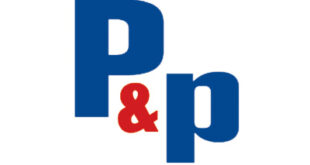As outlined in the new Smithers report, The Future of Global Printing to 2026, the global print industry has recovered across 2021 after a disruptive 2020.
Total value of global printing will reach $760.6 billion in 2021, with the equivalent of 41.9 trillion A4 prints produced worldwide. This is up from $750.0 billion in 2020, but volumes have declined further, down 5.87 trillion A4 prints from 2019. The effect has been most pronounced in publications, and some graphics and commercial applications. Lockdown (stay-at-home) orders led to a sharp drop in magazine and newspaper sales, only partially compensated for by a short-term increase in orders for educational and leisure books; and much of regular commercial print and graphics work was cancelled. Packaging and labels print have been far more resilient and provide a clear strategic focus for the industry moving forwards across the next five years.
As a degree of stability returns to end-use markets investment in new print and finishing equipment will be $15.9 billion this year.
Reacting to rapid evolutions in consumer demand, while modernising print rooms and business process will be central to future success for companies at all stages of the print supply chain. Smithers’ expert analysis identifies the following leading trends that will inform this across 2021-2026.
- In a post-COVID world less global, more local print supply chains will be more popular. Print buyers will place less reliance on single providers and just-in-time delivery models – instead there be more demand for agile print services that can react quickly to shifts in market conditions.
- Disrupted supply chains has generally benefited digital – inkjet and electrophotography print – accelerating its adoption in multiple end-use segments. Digital will increase its share of the market (by value) from 17.2% in 2021, to 21.6% in 2026; making it a major focus for R&D across the industry.
- Demand for printed e-commerce packaging will continue, with brands keen to offer improvements in experience and engagement. Higher quality digital printing will be used to capitalise on improved messaging on packs, promoting other products and adding a potential revenue source for print service providers. This aligns with the broader industry trend for lower volume printing that is more relevant to the consumer, as physical media is increasingly targeted to specific segments or even individuals.
- As the world increasingly connects electronically, print equipment will embrace more Industry 4.0 and web-to-print concepts. This will improve uptime and order turnaround, allowing better benchmarking, and for machines to publish available capacity online in real time to attract additional jobs.
 Printwear & Promotion The Total Promotional Package
Printwear & Promotion The Total Promotional Package




